Enjoy a belly full of S(e)oul food at Conrad Bengaluru
Conrad Bengaluru is hosting a 10-day Korean food festival to celebrate 50 years of the South Korea-India relationship.
Eating a bowl of ramen made with all the fixings I can find in the pantry—eggs, chillies, pak choi, and cheese—while binge-watching K-dramas, K-pop videos (most of the times BTS), or Korean reality shows is my version of a perfect weekend.
And, while I am usually proud of my ramen-making skills, the version I can whip up is not—well—authentic.
So, when YS Life was invited to attend a Korean food festival this weekend, this was my chance to get myself some of that delicious gimbap or tteokbokki and have my own “Korean” moment.
This year, Conrad Bengaluru is celebrating 50 years of South Korea-India diplomatic relationships. And what better way to do it than food!
For the event, two of the best chefs from Conrad Seoul—Chefs Jae Uk Kim and Lee— have been flown in to create a special menu.

Chef Kim and Chef Lee at Conrad Bengaluru
From various kinds of ramen, noodles, vegetable pancakes, gimbaps, and bibimbaps (Korean fried rice), to, of course, the sweet and spicy Korean fried chicken, the menu had all of my favourites.
But Conrad pulled out all the stops to make sure the environment matched the vibe of the food.
While the food was the centre of attraction, entering the restaurant, the first thing that caught my eye was a table of soju and sake bottles on display. Next to it, on a sofa, were four giant teddy bears wearing t-shirts that said, “#WheninSeoul”.
The dining area had walls lined up with colourful “jiusan”—a traditional parasol made with bamboo and oiled hanji paper—mostly used during the Joseon dynasty rule in Korea.
It was quite tempting to taste everything on the menu but I decided to ask Chef Kim for some recommendations.
And, I am glad I did!
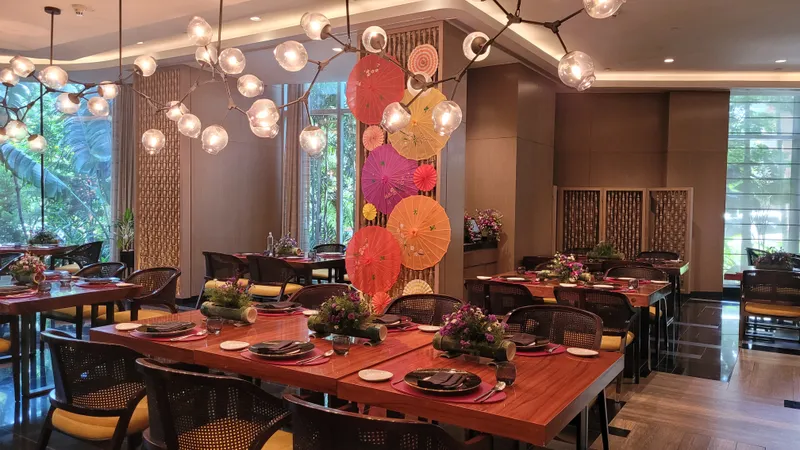
From Dak Gangjeong, the famous Korean fried chicken, and Hwangjae Haemul Ramyun—a signature item of the food festival—to spicy ramen made with lobster, crab, prawns, and scallops—and bibimbap, his suggestions proved to be phenomenal.
The menu is designed to make everyone feel included—from the noobs to K-netizens.
“In Korea, there are a lot of different versions of bibimbap like using beef or pork or eggs, but today we also have a vegetarian version, which everyone can enjoy,” he tells me.
The team also made kimchi, the star side dish of Korean food, with a twist. The chef said that they followed a traditional Korean recipe but the ingredients used were Indian.
I was also pleasantly surprised by the variety of sojus and sakes on offer. There was the “So-Tonic” cocktail made with soju, tonic water, ice, and lime, served with a wedge of grapefruit. I also tried the Umeshu cocktail, which was made with peach-flavoured soju, Chardonnay, and yuzu fruit.
The bubbly drinks were light and were perfect accompaniments for the food.
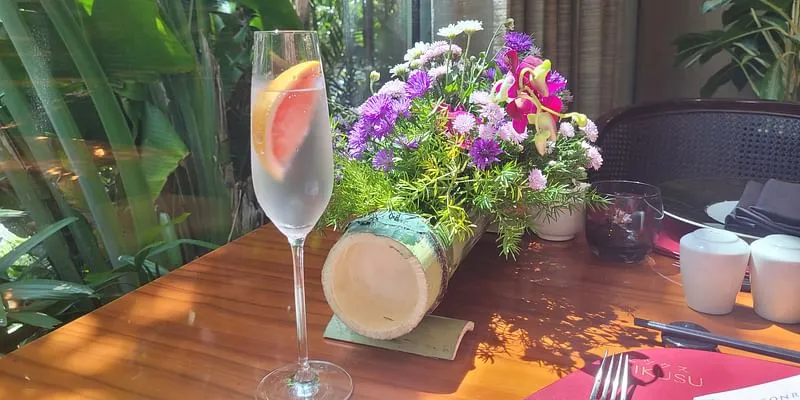
The So-Tonic cocktail
Heaven on a plate
Of course, I started with the Tuna Gimbap, which is a seaweed rolled rice snack with julienned carrots and cucumber, pickled radish, and tuna, placed on perilla leaves. It was fresh with little hints of the pickle and creamy tuna in each bite, sliced so one can easily lift and eat them using chopsticks. The kimchi also added another layer of flavour with its spice and pungency.
Up next was the fried chicken, which was exactly how I imagined when I watched BTS’ Kim Taehyung (V) make them on the reality show Jinny’s Kitchen. A staple on so many K-dramas, this was a must-have on the menu—at least for me.
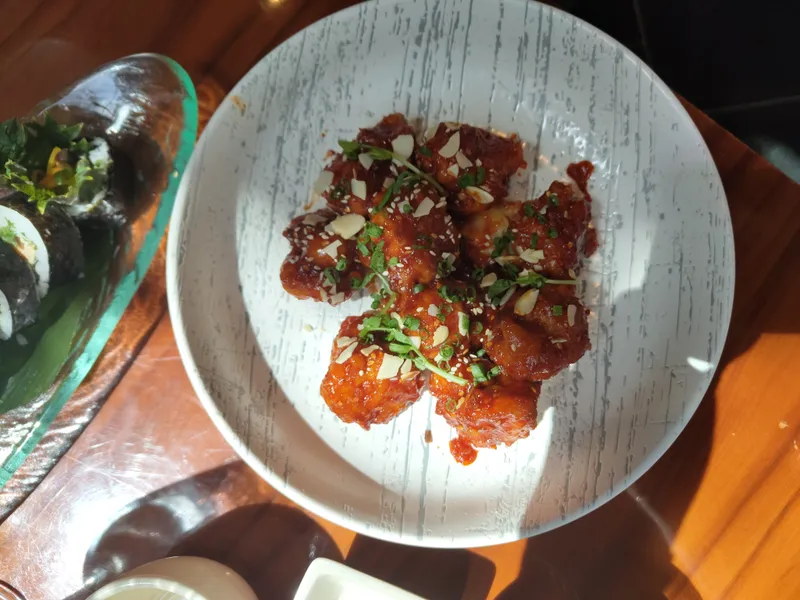
Dak Gangjeong - Korean fried chicken
In fact, a group of Koreans sitting at the next table got really excited to see us order it.
Verdict: No more KFC for me. The Korean fried chicken dish, made of succulent thigh pieces coated in a thin layer of batter, were fried to perfection, with a layer of sweet and spicy sauce, and topped with sesame seeds and almond flakes.
Following this was the Bibimbap, which had julienned carrot, zucchini, mushroom, and sprouts, plated on top of a bed of fragrant fried rice made with sesame oil, spices, and sauces. I also spiced it up with a bit of kimchi, making my own version of Kimchi Bibimbap.
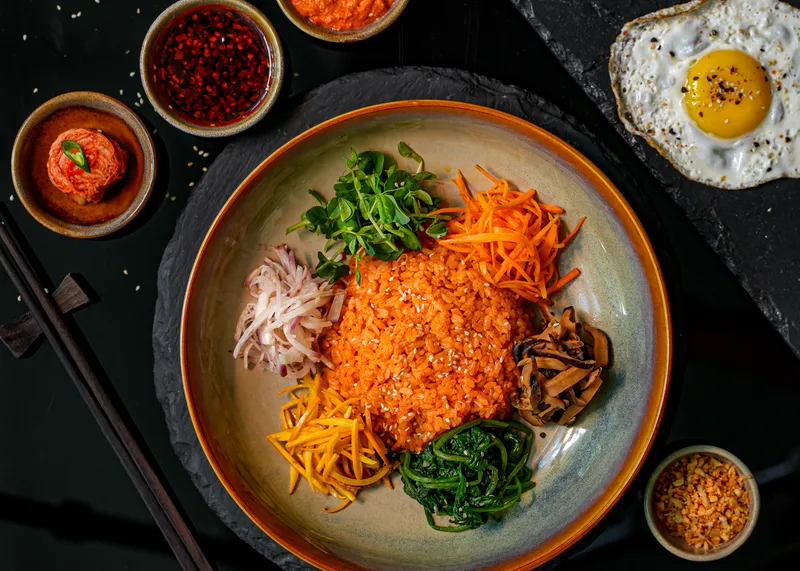
Bibimbap
And finally, the seafood ramen, Hwangjae Haemul Ramyun. Served in a huge bowl topped with a full crab, half a lobster, and a prawn, in a seafood bisque—a white creamy broth. Phenomenal. It’s going to be very difficult to go back to my own pantry-made ramen after this for sure.
For dessert, I decided to go for Yak Gwa, a traditional Korean sticky rice cake, deep fried and covered with sugar syrup. Not overly sweet, it was the perfect ending to the meal, cutting through the richness of the main course.
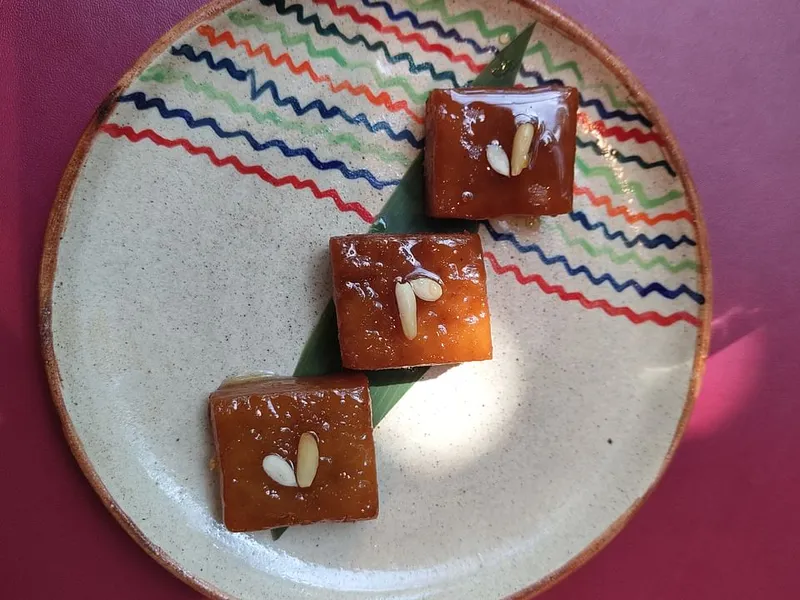
Yak Gwa - Korean traditional dessert
Annyeonghaseyo
In recent years, many Indians have warmed up to Korean culture and arts. The country now has a huge following of BTS, BlackPink, Stray Kids, and Twice, among others.
And the buck doesn’t stop with the K-dramas or K-pop idols. Chef Kim says, “I have my friends in the culinary industry and older Korean chefs who are working all around, and they are starting to spread our cultures and K-food everywhere. I think, in maybe five years, Korean cuisine will be as famous as Chinese cuisine.”
For Indians, ramen would mean the two-minute Maggi or other domestic brands, but K-culture is now changing that, especially for those in urban settlements. They are more accepting of it than ever before, especially now that many of these ingredients are available on ecommerce sites and are easily accessible.
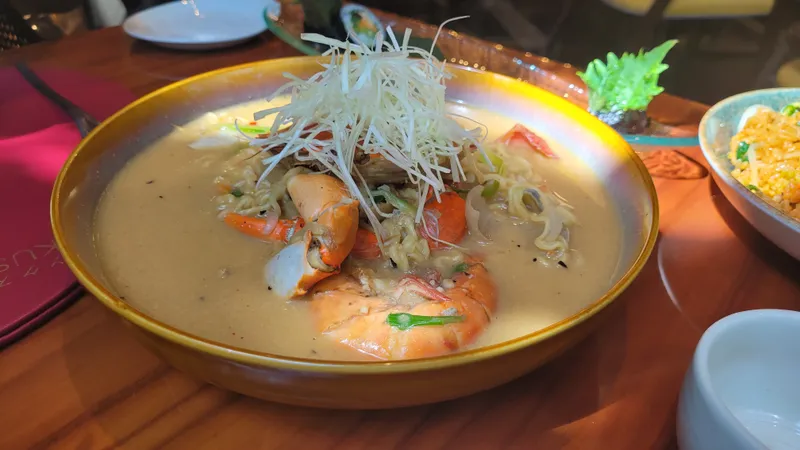
Hwangjae Haemool Ramyun - Seafood ramen
Chef Kim, who put up with my attempts to greet him with “annyeonghaseyo” (hello) and let me practise my broken Korean with him, was kind enough to not just talk about the food but also about Korean culture and even some of my most pressing questions.
As the ramen arrived, I asked—Is it actually true that Koreans use “Ramen meog euleo oseyo? (come have ramen)” to proposition someone?
He laughed and shyly responded yes!
We also discussed BTS FESTA—the 10-year anniversary of the K-pop boy band sensation—happening right now in South Korea, with various events lined up.
But in the end, the conversation circled back to the food festival, which the chef says will help bring together communities.
“It will be good for them (Koreans) who are homesick. For Indians and other foreigners, their great expectations for the opportunity to experience, actual authentic Korean food. So, we hope we can provide them with a realistic experience,” he adds.
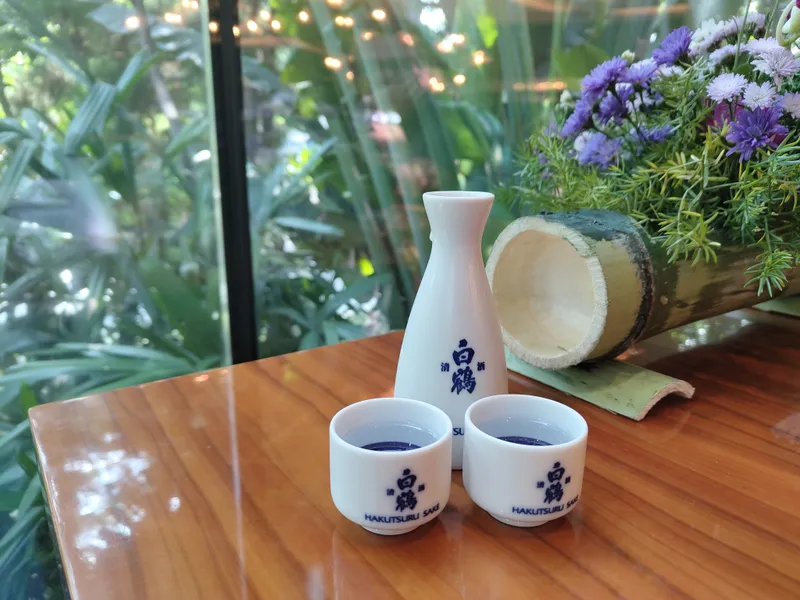
Blueberry-flavoured Soju
To end my day, I got some blueberry-flavoured soju served in a traditional bottle and cups. And as I have seen in countless K-dramas, I said “one shot” before drinking it in one go. The drink had fruity notes, leaving a mild flavour of blueberries on the palette.
As I got up to leave, I bid adieu to the chef with a sincere “kamsamnida” (thank you in Korean), followed by a bow, offering my genuine gratitude for the lovely meal and conversation.
It was a feast, to say the least. Spiritually, it felt like I was in Korea—filled with a heart full of love and a belly full of S(e)oul-full food. (Yes, pun intended)
The Korean Food Festival is currently taking place at Conrad Bengaluru and will go on until June 26.
Prices for two: Rs 2,000-5,000.
Edited by Affirunisa Kankudti







